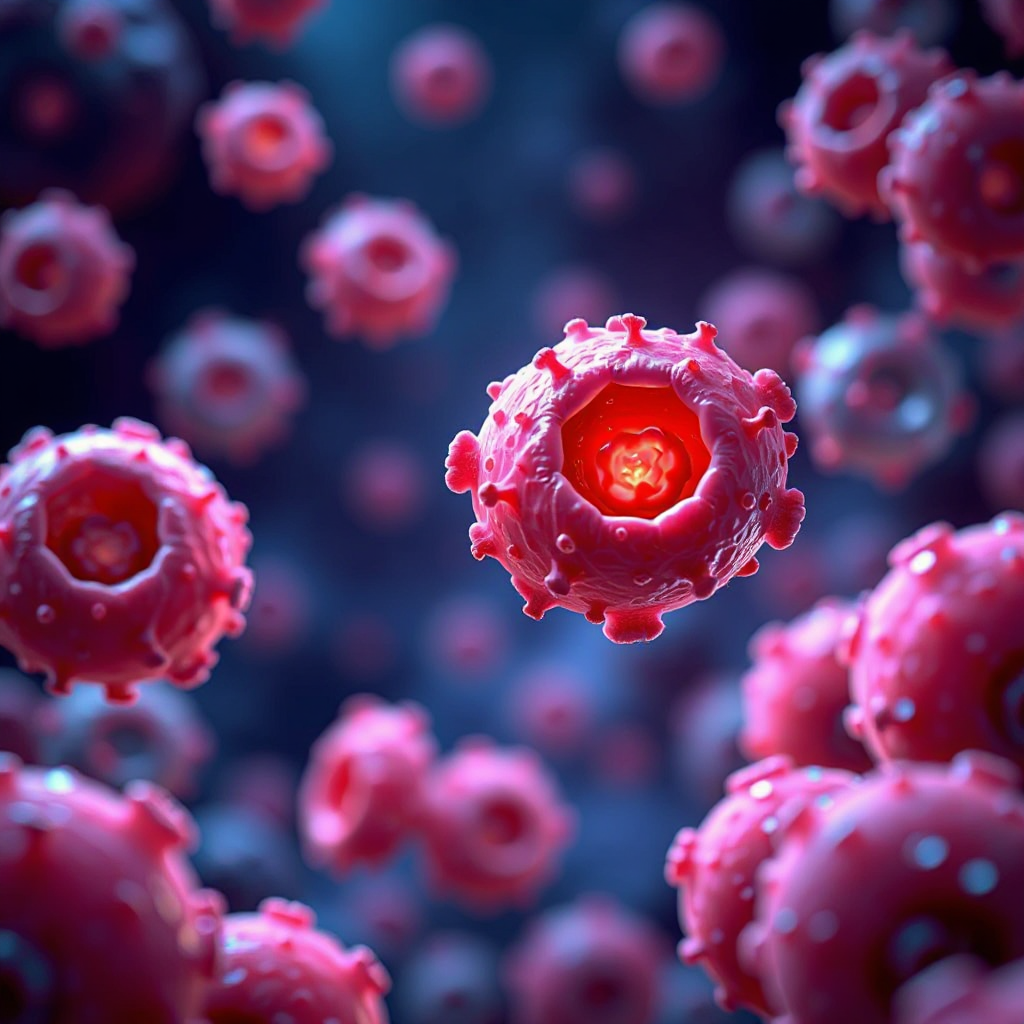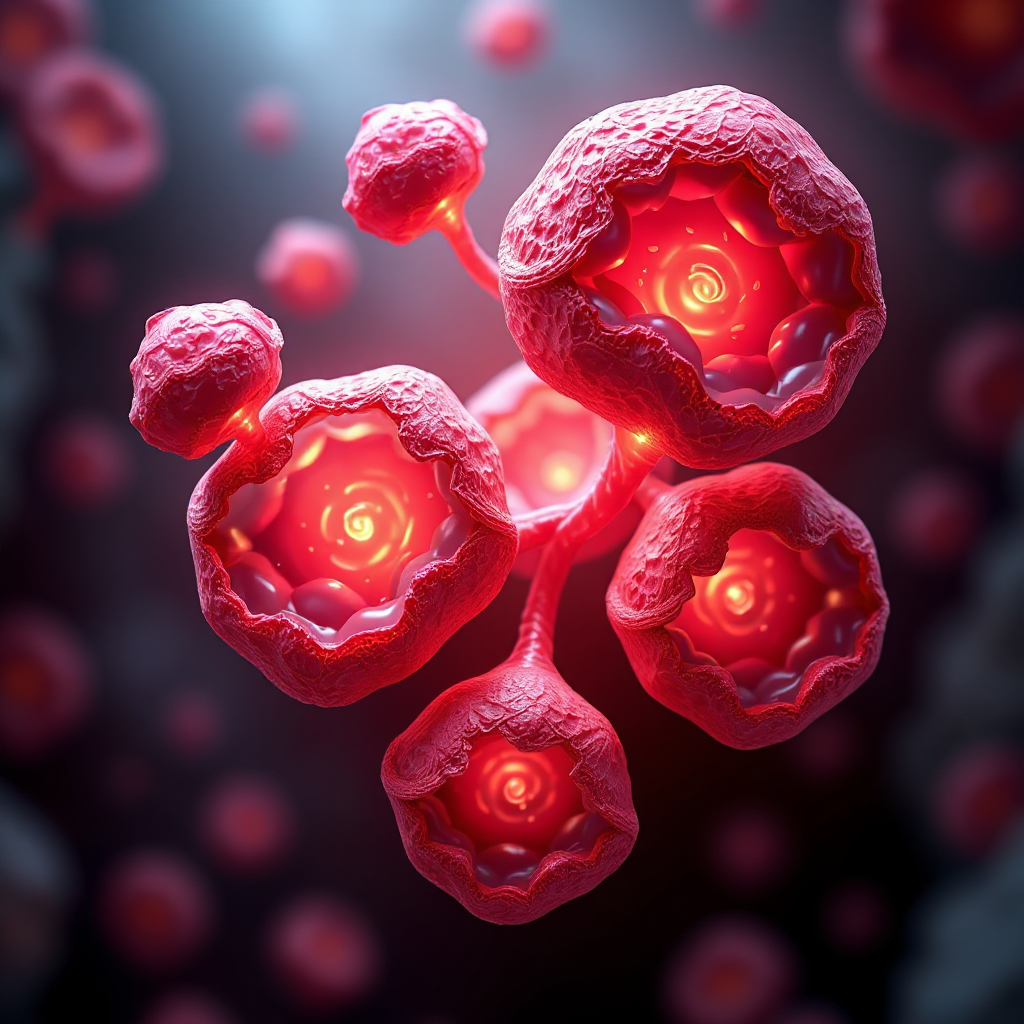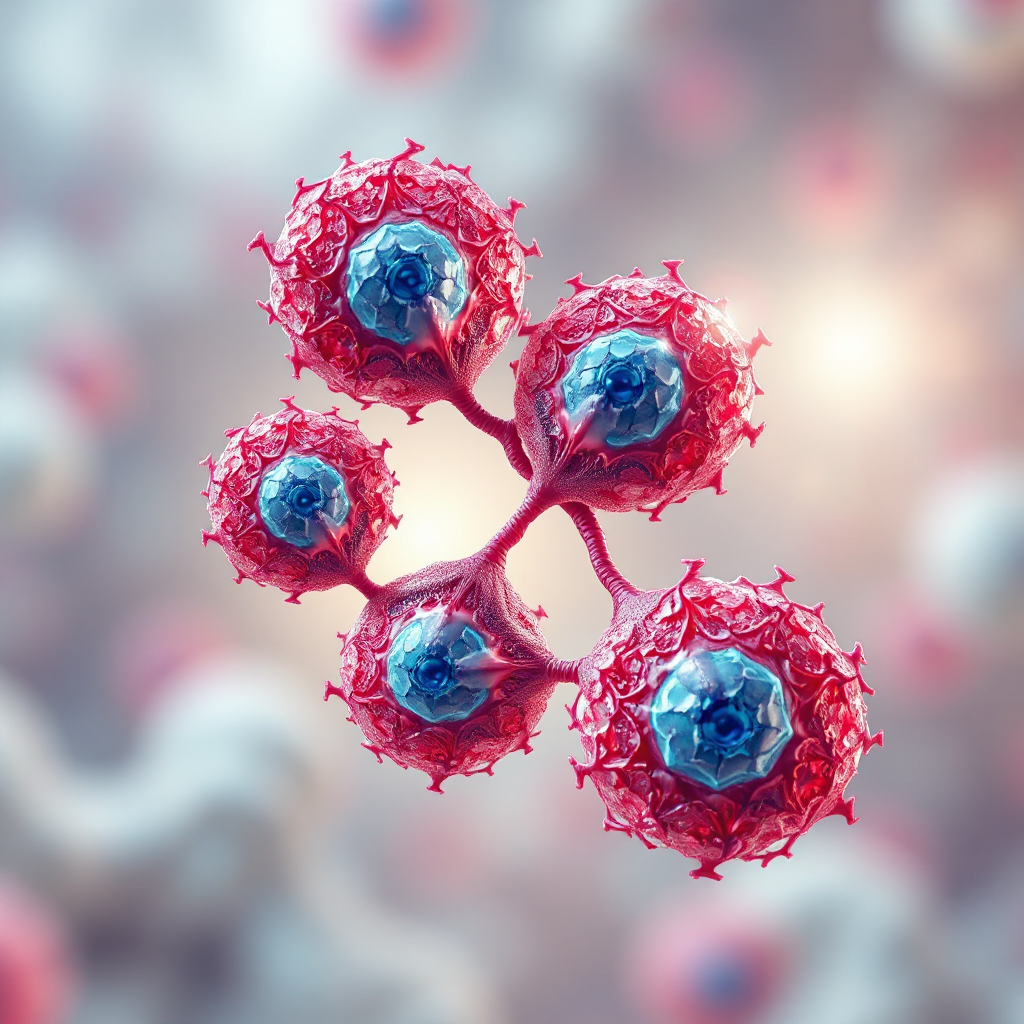Vaginal Cancer-What Are the Symptoms and Causes

Vaginal cancer is a rare but serious condition that accounts for only 1–2% of cancers in the female genital tract. You may notice symptoms like abnormal bleeding, unusual discharge, or pelvic pain. Risk factors include HPV infection, smoking, and a history of cervical cancer. Women over 60 face a higher likelihood of diagnosis, with the average age being 70. Early detection is crucial, as localized vaginal cancer has a 69% five-year survival rate, compared to just 26% for distant stages. Regular screenings and prompt attention to symptoms can save lives.
Key Takeaways
Watch for signs like unusual bleeding or strange discharge. These could mean vaginal cancer, so see your doctor soon.
Go to regular check-ups with your gynecologist. These visits can find early signs of vaginal cancer and help treatment.
Getting the HPV vaccine is a strong way to prevent it. This vaccine lowers the chance of getting HPV-related vaginal cancer.
Your habits matter. Stop smoking and live healthily to lower your risk of vaginal cancer.
Know your family’s health history. If relatives had gynecological cancers, your risk might be higher. Stay aware and take action.
Symptoms of Vaginal Cancer

Common Symptoms
Abnormal vaginal bleeding, especially after menopause or intercourse
One of the most common symptoms of vaginal cancer is abnormal vaginal bleeding. You might notice bleeding after intercourse or even after menopause. This symptom often occurs without pain, making it easy to overlook.
Unusual vaginal discharge, which may be smelly or bloodstained
You may experience unusual vaginal discharge that appears bloodstained or has a foul odor. This discharge can sometimes be mistaken for an infection, so it’s important to monitor any changes.
Pain during intercourse or bleeding afterward
Pain during sexual intercourse or bleeding afterward could signal a problem. These symptoms are not exclusive to vaginal cancer but should prompt you to seek medical advice.
Pelvic pain or discomfort
Persistent pelvic pain or discomfort, especially if it doesn’t go away, may indicate an underlying issue. This pain can sometimes extend to your lower abdomen or back.
Less Common Symptoms
A lump or mass in the vagina
You might feel a lump or mass in your vagina. This symptom is less common but can be a sign of advanced vaginal cancer.
Persistent itching or irritation
Itching or irritation in the vaginal area that doesn’t improve with treatment could be another warning sign.
Painful urination or changes in urine color (e.g., dark or rusty)
Painful urination or noticeable changes in the color of your urine, such as a dark or rusty appearance, may occur. These symptoms often overlap with other conditions, making diagnosis challenging.
Changes in bowel habits or rectal pain
You might notice changes in your bowel habits, such as constipation, or experience rectal pain. These symptoms can sometimes accompany advanced stages of vaginal cancer.
Early Warning Signs
Subtle symptoms that may be painless or easily overlooked
Vaginal cancer often starts with subtle symptoms. You may not feel pain or discomfort initially, which makes early detection difficult. Symptoms like abnormal bleeding or discharge might seem minor but should not be ignored.
Importance of regular gynecological check-ups for early detection
Regular gynecological check-ups play a crucial role in identifying early signs of vaginal cancer. These visits allow your doctor to detect abnormalities before symptoms become severe. Early detection significantly improves treatment outcomes.
Note: Vaginal cancer symptoms can mimic those of other conditions, such as infections or non-cancerous growths. If you notice any unusual changes, consult a healthcare professional promptly.
Causes of Vaginal Cancer

Human Papillomavirus (HPV) Infection
HPV as a leading cause of vaginal cancer
HPV infection plays a significant role in the development of vaginal cancer, particularly squamous cell carcinoma. This virus causes changes in the cells of the vaginal lining, which can lead to cancer over time. If you have HPV, your risk of developing vaginal cancer increases, especially if the infection persists.
Role of HPV vaccination in prevention
The HPV vaccine offers a powerful tool for prevention. Clinical studies show that vaccines like Gardasil 9 are nearly 100% effective in preventing infections and precancers caused by HPV types linked to vaginal cancer. By getting vaccinated, you can significantly lower your risk of developing this condition.
Age and Hormonal Factors
Increased risk in postmenopausal women
Your risk of vaginal cancer increases as you age. Most cases occur in women over 70, while very few are reported in women under 40. Postmenopausal women face a higher likelihood of diagnosis due to changes in their hormonal environment.
Hormonal imbalances and their impact
Hormonal imbalances can also contribute to the development of vaginal cancer. These imbalances may weaken the vaginal lining, making it more susceptible to abnormal cell growth.
Genetic and Lifestyle Factors
Family history of gynecological cancers
If you have a family history of gynecological cancers, your risk of vaginal cancer may be higher. Genetic predisposition can play a role in how your body responds to certain risk factors.
Smoking and its role in increasing risk
Smoking more than doubles your risk of developing vaginal cancer. Tobacco contains carcinogens that damage the cells in your body, including those in the vaginal lining. Quitting smoking can help reduce this risk and improve your overall health.
Tip: Adopting a healthy lifestyle and staying informed about your family medical history can help you manage your risk factors effectively.
Underlying Medical Conditions
History of cervical cancer or precancerous conditions
Your medical history can significantly influence your risk of developing vaginal cancer. If you have had cervical cancer or precancerous conditions like cervical intraepithelial neoplasia (CIN), your chances of developing vaginal cancer increase. These conditions often involve abnormal cell growth, which can spread to nearby tissues over time. A history of invasive vulvar carcinoma also raises your risk.
Certain infections, such as herpes simplex virus (HSV) or Trichomonas vaginalis, may contribute to this risk. These infections can cause chronic inflammation, which weakens the vaginal lining and makes it more susceptible to cancerous changes. Additionally, exposure to diethylstilbestrol (DES), a synthetic hormone once prescribed during pregnancy, has been linked to a higher likelihood of vaginal cancer in women exposed to it in utero.
Weakened immune system and its contribution
A weakened immune system can make it harder for your body to fight off infections and abnormal cell growth. Conditions like HIV infection or other immunosuppressive disorders can increase your vulnerability to vaginal cancer. When your immune system is compromised, it struggles to eliminate harmful viruses like HPV, which is a leading cause of vaginal cancer.
Tumor suppressor gene dysfunction may also play a role. These genes help control cell growth and repair damaged DNA. When they fail to function properly, abnormal cells can multiply unchecked, leading to cancer. If you have a history of cervical cancer or vaginal intraepithelial neoplasia, your immune system may already be under strain, further increasing your risk.
Tip: Strengthening your immune system through a healthy lifestyle and regular medical check-ups can help reduce your risk of vaginal cancer.
Risk Factors for Vaginal Cancer
Behavioral and Environmental Risk Factors
Smoking and exposure to carcinogens
Your lifestyle choices can significantly influence your risk of vaginal cancer. Smoking, for instance, more than doubles your chances of developing this condition. Cigarettes contain carcinogens that damage the cells lining your vagina, making them more susceptible to cancerous changes. Chronic exposure to other carcinogens, such as those found in certain chemicals or environmental pollutants, can also increase your risk.
Long-term use of certain medications (e.g., DES exposure)
If your mother took diethylstilbestrol (DES) during pregnancy, you may face a higher risk of vaginal cancer. DES, a synthetic hormone prescribed to prevent pregnancy complications in the mid-20th century, has been linked to clear cell adenocarcinoma of the vagina. Chronic irritation from medical devices like pessaries or treatments such as cervical irradiation can further elevate your risk.
Medical History and Genetic Predisposition
Previous cancer diagnoses
A history of cervical or vulvar cancer increases your likelihood of developing vaginal cancer. These cancers often share similar risk factors, such as persistent HPV infection or weakened immune function. If you’ve undergone treatments like cervical irradiation, your vaginal tissues may be more vulnerable to abnormal cell growth.
Family history of cancer
Your genetic background plays a role in your risk. If close relatives have had gynecological cancers, you may inherit a predisposition to vaginal cancer. While not all cases are hereditary, understanding your family’s medical history can help you take preventive measures.
Preventable Risk Factors
Importance of HPV vaccination
Preventing HPV infection is one of the most effective ways to reduce your risk of vaginal cancer. The HPV vaccine protects against high-risk strains of the virus that cause most cases of vaginal and cervical cancers. By getting vaccinated, you can significantly lower your chances of developing this condition.
Regular screenings and early detection
Routine gynecological exams and screenings are essential for catching vaginal cancer early. Pap smears and HPV tests can identify precancerous changes before they progress. Early detection improves treatment outcomes and can save lives.
Tip: Adopting a healthy lifestyle, avoiding smoking, and practicing safe sex can further reduce your risk of vaginal cancer.
How Symptoms and Causes Are Interconnected
Understanding the Link
How causes lead to specific symptoms
The causes of vaginal cancer often result in specific symptoms that can help you identify the condition early. For example, persistent HPV infection can lead to abnormal changes in the vaginal lining, causing symptoms like unusual bleeding or discharge. Smoking damages the cells in your vaginal tissue, increasing the likelihood of abnormal growths that may present as lumps or masses. A weakened immune system may allow infections or precancerous conditions to progress, leading to pain during intercourse or pelvic discomfort.
Recognizing these connections can help you understand how risk factors translate into warning signs. For instance, advanced stages of vaginal cancer may cause painful urination, constipation, or swelling in the legs. These symptoms often indicate that the cancer has spread to nearby tissues.
Recognizing patterns for early intervention
Certain patterns in symptoms can guide you toward early intervention. Common early signs include:
Unusual discharge with a foul odor
A lump or mass in the vagina
Pain during sexual activity
As the cancer progresses, you might notice additional symptoms like back pain, pelvic pain, or changes in bowel habits. Paying attention to these patterns and seeking medical advice promptly can make a significant difference in your health outcomes.
Role of Early Detection
Identifying symptoms early to improve outcomes
Early detection of vaginal cancer dramatically improves survival rates. Patients diagnosed at an early stage have a much higher five-year survival rate compared to those diagnosed at advanced stages. By identifying symptoms like abnormal bleeding or discharge early, you can begin treatment before the cancer spreads.
Preventive measures to reduce risk
You can take several steps to reduce your risk of vaginal cancer. These include:
Getting vaccinated against HPV
Quitting smoking to protect your vaginal tissue
Attending regular gynecological check-ups to detect precancerous changes
By adopting these preventive measures, you can lower your risk and improve your chances of catching any abnormalities early.
Vaginal cancer is a rare but serious condition that you can address through awareness and prevention. Symptoms like abnormal discharge, pelvic pain, or a mass in the vagina should prompt you to seek medical advice. Risk factors such as HPV infection, age over 60, or a history of cervical cancer increase your likelihood of developing this disease. Advances in treatment, including immunotherapy and targeted therapies, offer hope for better outcomes. Regular screenings and early detection remain your best tools for improving survival rates. If you notice any concerning symptoms, consult a healthcare professional without delay.
FAQ
What are the early symptoms of vaginal cancer?
Early symptoms include abnormal vaginal bleeding, unusual discharge, or pelvic pain. These signs may seem minor at first but should not be ignored. Regular gynecological check-ups can help detect these symptoms early.
Can vaginal cancer be prevented?
You can reduce your risk by getting the HPV vaccine, avoiding smoking, and attending regular screenings. Practicing safe sex and maintaining a healthy lifestyle also play a key role in prevention.
Is vaginal cancer hereditary?
A family history of gynecological cancers may increase your risk. However, most cases result from other factors like HPV infection or lifestyle choices. Knowing your family history helps you take preventive measures.
How is vaginal cancer diagnosed?
Doctors use pelvic exams, Pap smears, and imaging tests like MRIs or CT scans to diagnose vaginal cancer. A biopsy confirms the diagnosis by examining tissue samples for cancerous cells.
Who is most at risk for vaginal cancer?
Women over 60, smokers, and those with a history of HPV or cervical cancer face higher risks. A weakened immune system or exposure to DES during pregnancy also increases the likelihood of developing this condition.
Tip: If you notice any unusual symptoms, consult your doctor immediately. Early detection improves treatment outcomes.
See Also
Understanding Fallopian Tube Cancer: Symptoms And Causes
Breast Cancer: Key Symptoms And Underlying Causes Explained
Bladder Cancer Symptoms And Causes You Should Know
